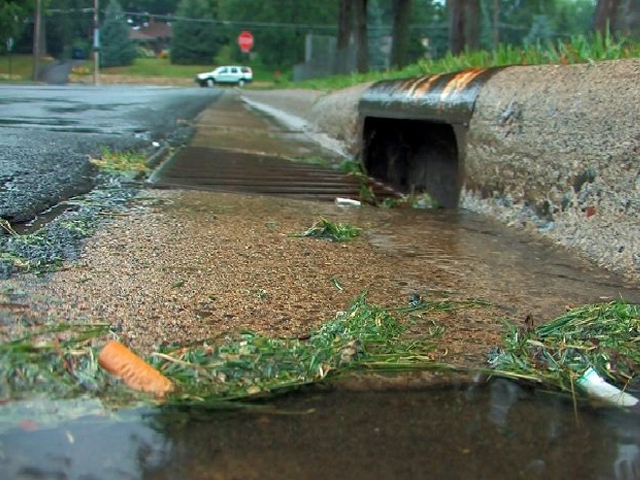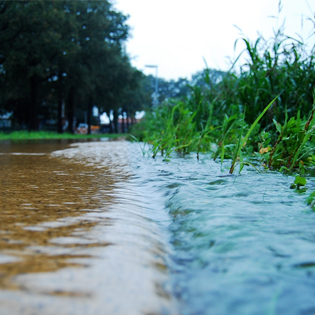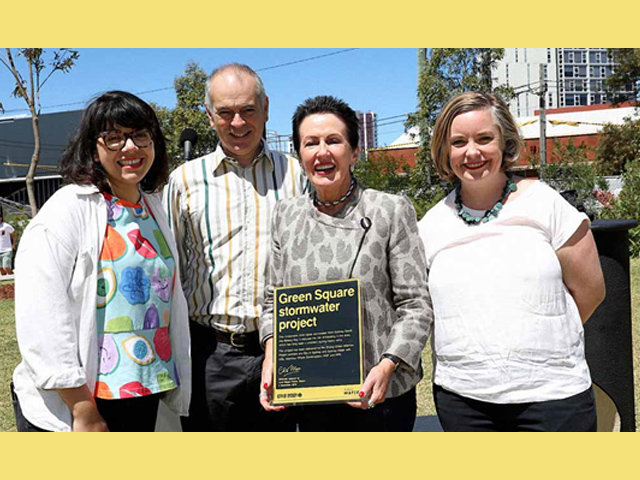A NEW WAY TO MANAGE STORMWATER
01 Nov 2016
New Stormwater management strategies need to be considered to take into account future urban population growth. Issues such as degradation of natural waterways and streams need to be addressed with more proactive management methods.

With the population of cities such as Brisbane and Melbourne expected to double by 2061, many of our strategies with regard to how we manage our urban environment will have to change going forward.

This is especially the case with stormwater management, where the challenges associated with greater levels of urbanisation are being accompanied by a growing push toward water sensitive urban design.
That raises interesting questions about the impact which greater urbanisation will have in terms of stormwater management within our cities, how our approach toward stormwater management will need to change and where our investment priorities in this area should lie.
Rod Wiese, principal engineer at stormwater engineering firm Storm Consulting, notes that the growth in population will mean greater intensification of development within established urban areas and increased levels of sprawl in growth areas. Both of these, he said, will precipitate more impervious surfaces which in turn will see more runoff and will put greater pressure on both existing systems in established urban environments and receiving catchments in growth areas.
This will be especially challenging in growth areas, Wiese says, as previously natural environments will be inundated with greater volumes of water and higher levels of peak flows. If nothing is done, he says, this will likely lead to issues such as degradation of natural waterways and streams.
In order to counter this, Wiese says Australia needs to move beyond traditional approaches centred around concrete drainage and toward more proactive management at the source of catchment in urban environments. As well as tank capture, stormwater harvesting and infiltration back into local landscape, he says a number of encouraging initiatives are happening in terms of actually decommissioning concrete drainage and replacing these with natural waterways. In the Sydney suburb of Fairfield, for example, a 1.5km concrete line is being replaced by a natural stream, the first 500m of which have been completed. In Melbourne, plans are underway to do a similar thing with an area of Mooney Ponds Creek.
A further area of opportunity, Wiese says, revolves around classic irrigation approaches in streetscapes, such as trees in the streets and ‘rain gardens’, which involve water being shifted off the streets into depressed gardens which are situated at a level which is lower than street level.
All of these approaches, Wiese says, deliver benefits which extend beyond absorbing some stormwater or water which comes from heavy rain. Since impurities sink to the bottom, tanks help to clean out some of the pollution in water which actually does arrive, he says. Vegetation and natural waterways, meanwhile, help to create a pleasant atmosphere from an aesthetic viewpoint.
“When you talk about infrastructure investment, we’ve got all this development going on, do we just build drainage to get rid of our water and stop our flooding, or do we get more clever back in our catchments as to how we manage this?” he said.
Speaking predominately of the eastern states, Wiese says current approaches have varying degrees of effectiveness. Whilst some local councils in particular in rural and regional areas remain overly reliant upon drainage, others are adopting more proactive approaches. In terms of state government organisations, Wiese says Melbourne Water has historically run a number of excellent programs whereas Sydney Water has adopted a more traditional approach historically but is now starting to look toward more innovative ways of managing stormwater particularly with urban waterways.
Wiese is not alone in his sentiments about Australia needing fresh approaches toward water management and urban design.
Last year, City of Melbourne councillor Aaron Wood, who chairs the city’s environment portfolio and serves as deputy chair of its economic development portfolio, nominated water sensitive urban design as a means by which to manage flood and other risks as a critical part of the city’s push to become more sustainable.
Wood said Melbourne and other Australian cities had in the past been excessively reliant upon large scale engineering solutions to flood risk management, taking an approach that required the construction of large drainage systems beneath city streets and the pumping of dirty water out into Port Philip Bay. To reduce risks in the flood-prone Elizabeth Street catchment area running north-south from the inner northern suburb of Carlton down into the middle of town, for example, the city had adopted a strategy based around green roofs, large parks, permeable pavement and large stormwater harvesting units.
Wiese says there is an encouraging push at the community level toward placing greater value upon urban waterways but says action in this area needed greater support from within the formalised planning system.
He says the traditional end of line approach based around large centralised systems needs to give way to more proactive management at the source of catchment.
“There are organisations that focus on an end of line or precinct scale treatment to manage peak flows and water quality,” Wiese said, referring to some of the more traditional approaches toward water management.
“…these organisations have got this centralised thinking of saying ‘well, we are treating and managing all of our water in these big end of line assets namely large wetlands and detention basins.
“My question is, what happens to our waterway upstream of these centralised systems? This strategy does nothing to protect our upstream waterways (under the traditional approach). We are using our natural waterways to convey all this dirty storm water in high volumes down to these systems where it then gets treated. The centralised approach has some benefits downstream but it is still leading to significant upstream degradation.”
Via Sourceable







